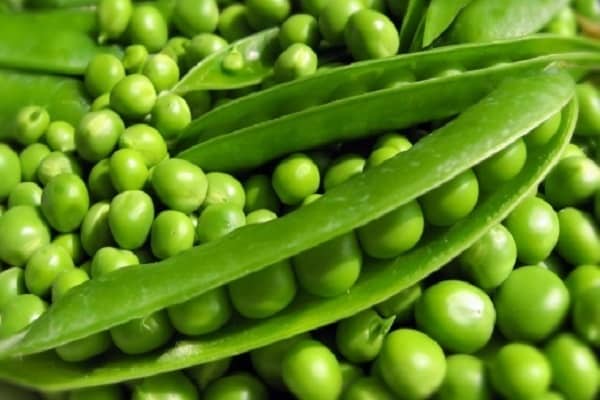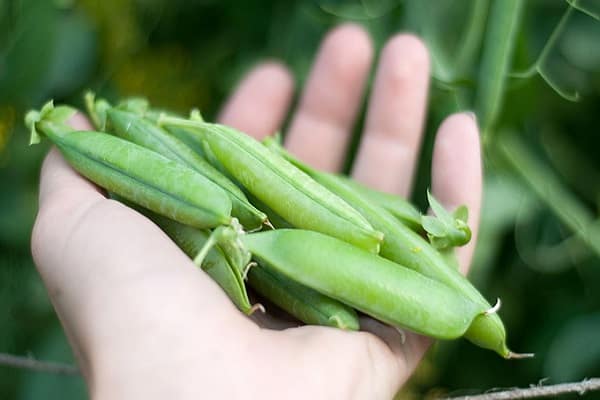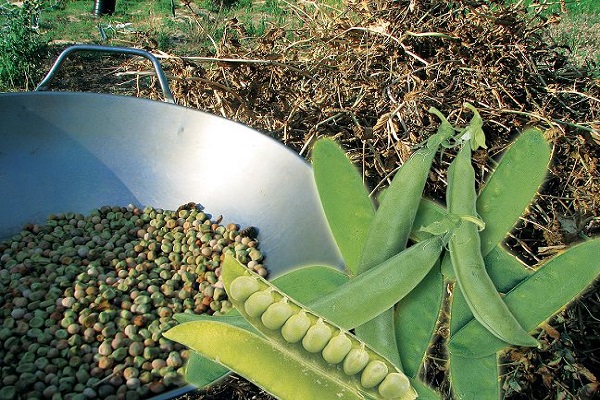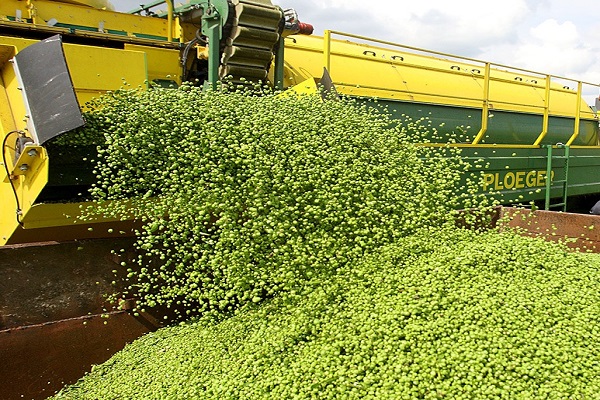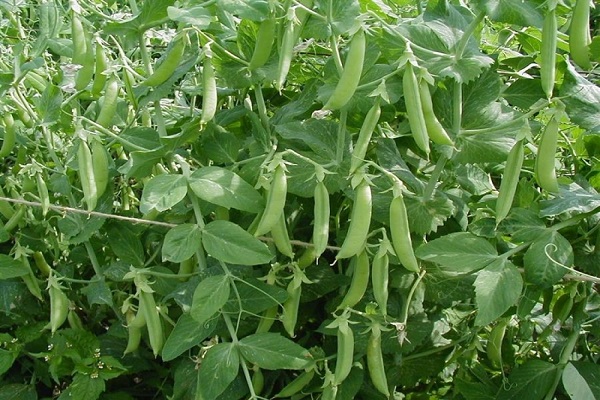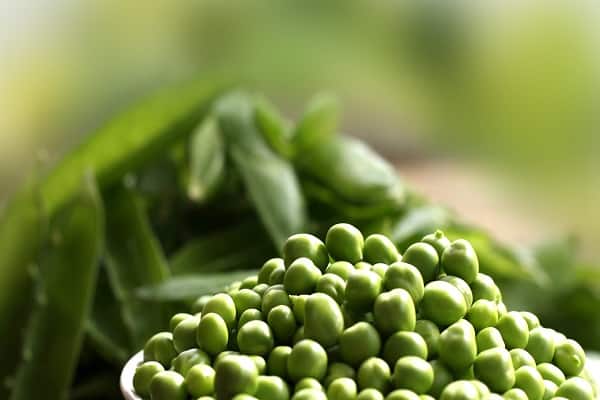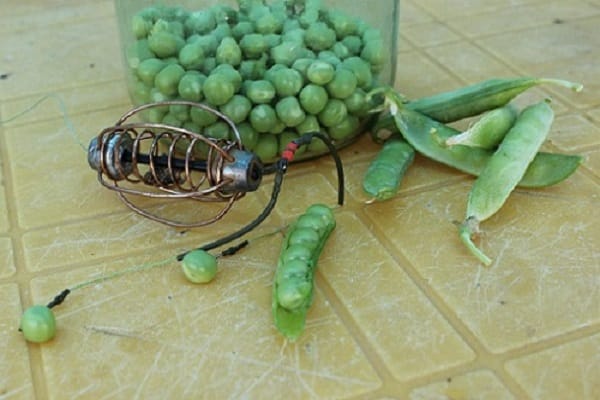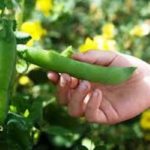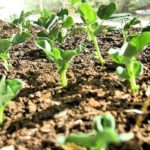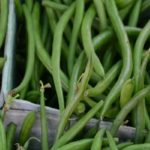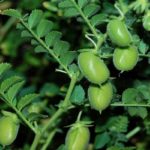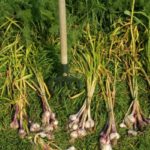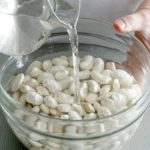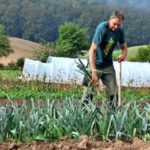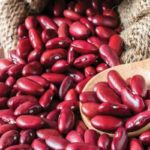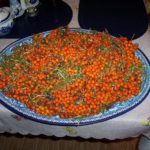The technology for harvesting grown peas on an industrial scale is considered a rather complex procedure. Neglecting the rules of the harvesting process risks losing a quarter of the harvest. The separate cleaning method is effective in dry weather conditions. Strong winds and rain contribute to increased losses. The complexity is due to the biological characteristics of the crop: uneven ripening, lodging, cracking of fruits and shedding of seeds.
Harvesting of beans in private gardens occurs when the blades reach milky ripeness.Morning hours are preferable, since in the heat the delicate product withers and is poorly stored.
Ripening time
The key parameter for the ripening of shoulder blades is the pea variety. The period from the appearance of sprouts to harvest varies between 9-11 weeks. Brain varieties, growing up to 50 cm, have a growing season of 60-80 days. Hulling varieties, up to 90 cm high, ripen in 60-65 days. Low-growing sugar varieties are ready in 60 days.
When to start harvesting peas
Pea ripening begins at the end of June. Cleaning is carried out in several stages, starting with the lower specimens. Overripe blades are removed as they inhibit the formation of new fruits.
Early ripening sugar varieties must be harvested unripe and reach readiness in mid-June. Cleaning continues for one and a half to two weeks at intervals of 3-5 days.
Peeling varieties intended for green pea, harvested in the phase of juicy leaves and tender beans. Dull blades covered with mesh are discarded and sent for grain. Harvesting is carried out quickly, no longer than a week, to prevent the beans from becoming starchy.
Harvesting for grain
Beans intended for grain are left on the bush until fully ripened. Plants should be collected by cutting, tied into bunches and hung to ripen in a dry room for one to two weeks. Ripe pea fruit peeling varieties are susceptible to cracking, but sugar varieties are not. The timing of harvest readiness is indicated by the ripening of beans in the lower part of the plants at a time when other specimens are covered with a net and begin to dry out.
Combination of separate harvesting and direct combining
Growing peas on an industrial scale, it provides a combination of two harvesting options: separate and direct combining. Separate harvesting lasts a week, with direct threshing lasting no more than four days, while the combined method varies from 8 to 10 days. The separate method is divided into two types.
- The first consists of mowing peas, placing them in windrows, picking them up, loading them onto transport and threshing.
- The second involves mowing with swathing and the use of a mobile thresher, which receives the pea windrows and threshes them immediately.
Separate harvesting is carried out in case of yellowing of the stems and leaves at the top of the plant, waxy ripeness of the seeds in the middle, drying of the leaves, beans and hardening of the seeds. The product remains in the windrows until the fruit dries and reaches technical maturity.
Direct harvesting consists of collecting green mass and threshing, excluding the first points: advance mowing and formation of windrows. The process begins when the leaves are brown, the beans are brown and the seeds are hard. This harvesting method was introduced due to the development of lodging-resistant varieties.
Special attachment to reduce crop loss
Peas are mowed using mowers and reapers. If the headers are equipped with special attachments, it will be possible to prevent large crop losses. The attachments are suitable for all combines. Some problems arise when using them in conditions of high humidity due to pulling out bushes with rhizomes clogging the headers. You also need to monitor the installation level of the special nozzle - a significant decrease leads to the removal of stones and soil.
What to do after harvesting
Threshed grains are cleaned of foreign impurities using a special grain separator, which sifts out unnecessary objects. A perishable product is allowed to dry and preserve. The vines remaining on the site after harvesting must be cut off and placed in a compost heap. The roots are buried in the soil when plowing. A good fertilizer that can replace the usual organic matter is crushed green mass buried in the ground. At the same time, the soil becomes fertile and its structure improves.
The early-ripening culture allows the cultivation of daikon, radish, lettuce, and dill immediately after the ridges are cleared.
Peas are eaten fresh, dry, frozen and canned. It is added to first and meat courses, salads.
Slightly unripe sugar-type pods that have been blanched for five minutes can be frozen. This procedure is also necessary for grains intended for drying. In this case, the peas are blanched twice for two minutes, after which they are washed, cooled in cold water and dried in a draft for 12 hours. Then the seeds are dried in the oven at temperatures up to +70 degrees. Optimal storage container: glass jars with screw-on metal lids.
Part of the harvest is prepared for seed material.

